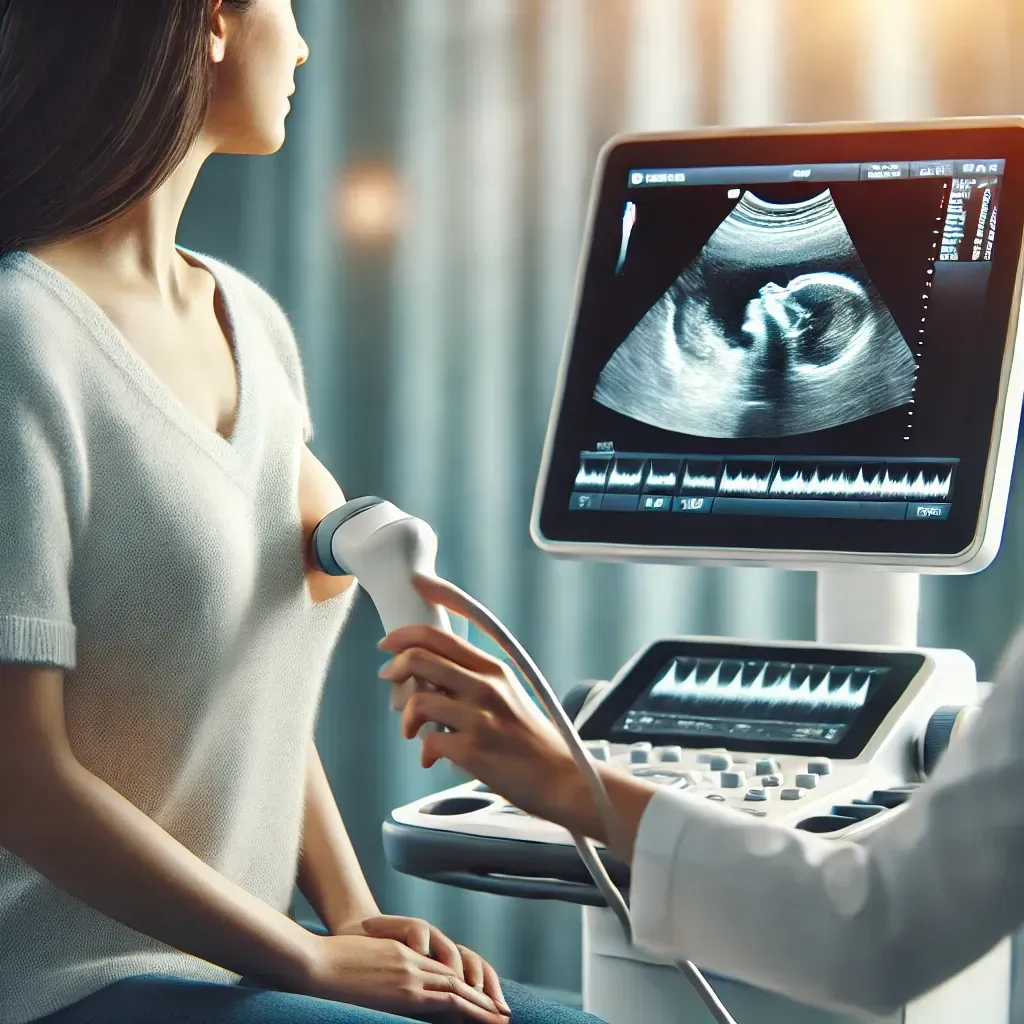
Seeing Is Believing: The Benefits of Ultrasound for Patients and Providers

The Role of Ultrasound in Detecting Breast Health Issues Before Mammograms
The Role of Ultrasound in Detecting Breast Health Issues Before Mammograms
When it comes to breast health, most women are familiar with the importance of mammograms. However, did you know that ultrasound can play an equally important role in breast screening, especially for younger women or those with dense breast tissue? In today’s post, we’ll explore how ultrasound can be a valuable tool in detecting breast health issues even before a mammogram is recommended, and why it could be a proactive option for many women.

Understanding Breast Ultrasound
Breast ultrasound is a non-invasive imaging technique that uses sound waves to create detailed pictures of the breast tissue. Unlike mammograms, which rely on X-rays, ultrasounds can provide a clearer image of the breast tissue for certain women, particularly those with dense breasts. This makes it an excellent tool for detecting abnormalities that may not be as visible with traditional screening methods.
Why Choose an Ultrasound Before a Mammogram?
Dense Breast Tissue
Women with dense breast tissue may find mammograms less effective in detecting abnormalities. Dense tissue can mask the presence of lumps or other concerns, making it harder for a mammogram to provide a clear result. Ultrasound, on the other hand, can differentiate between solid masses and cysts, providing a clearer image of what's happening inside the breast.
Early Detection for Younger Women
While mammograms are typically recommended starting at age 40 or 50, younger women who have a family history of breast cancer or other risk factors may benefit from earlier screenings. Ultrasound is a safe and effective option for women under the age threshold who want to stay proactive about their breast health.Safe and Radiation-Free
One of the biggest advantages of an ultrasound is that it’s radiation-free. For women who may be concerned about radiation exposure from regular mammograms, ultrasound offers a safer alternative for regular monitoring of breast health. This is especially important for women who may need more frequent screenings due to a higher risk of breast cancer.Targeted Screening
Ultrasound allows for more targeted imaging, which means that if a lump or abnormality is found during a physical exam, the ultrasound can focus directly on that area to provide a more detailed image. This can help in determining whether the lump is solid (which could indicate a tumor) or fluid-filled (often a benign cyst).Complementary to Mammograms
While ultrasounds are valuable on their own, they are also used as a complementary tool to mammograms. For women who have already had a mammogram and may require further testing, an ultrasound can provide additional clarity and insight into areas of concern, helping doctors make more accurate diagnoses.
Who Should Consider Breast Ultrasound?
Women with Dense Breasts: If a mammogram shows that you have dense breast tissue, your doctor may recommend a follow-up ultrasound to get a clearer view.
Younger Women with Risk Factors: If you have a family history of breast cancer or carry genetic mutations like BRCA1 or BRCA2, an ultrasound can help you stay ahead of potential issues even before mammograms are advised.
Women with a Palpable Lump: If you or your doctor feel a lump during a physical exam, an ultrasound can quickly determine whether it's a benign cyst or something that requires further attention.
The Bottom Line
While mammograms are the gold standard for breast cancer screening, they are not the only option available. Ultrasound imaging can be a powerful and proactive tool, especially for women with dense breast tissue, younger women at risk of breast cancer, and anyone seeking a radiation-free screening option. By incorporating ultrasound into your breast health routine, you can detect potential issues earlier and take action sooner.
At Atlanta Ultrasound, we’re committed to supporting women’s health by offering advanced imaging options tailored to your individual needs. If you’re interested in learning more about how breast ultrasound could benefit you, reach out to us today. Your health is our priority, and we’re here to ensure you have the tools to stay informed and empowered.